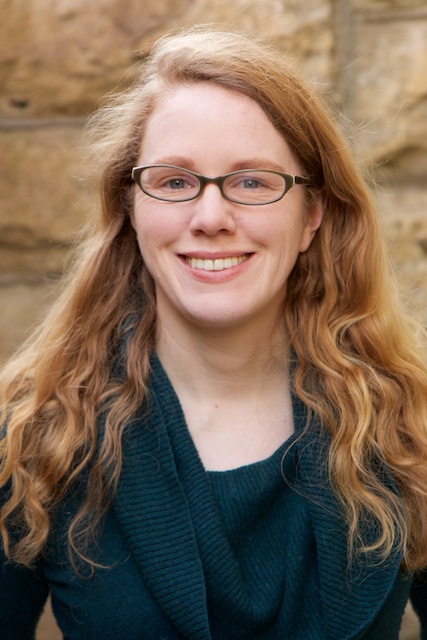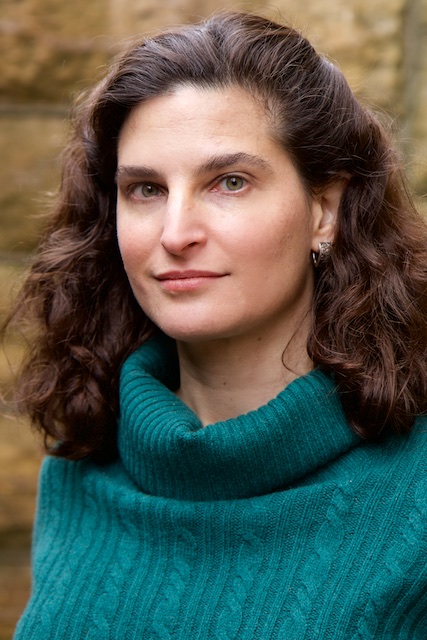
When Rebecca Flint and Amanda Weinstein were selected for one of the nation’s highest honors in science, it was not for their accomplishments. It was for their impact on the future.
Flint and Weinstein, both assistant professors in the Department of Physics and Astronomy at Iowa State University, have each received CAREER awards from the National Science Foundation (NSF). CAREER awards are incredibly competitive, which makes these two scientists all the more extraordinary.
Spinning advances in physics
Flint, who is also a U.S. Department of Energy (DOE) Ames Laboratory associate, will receive a $500,000 grant for her research in stabilizing “spin liquids.” A spin liquid is a state of matter with properties that remain unorganized even at low temperatures. Think of liquid water, which is in a disordered state until the temperature is lowered enough to turn the liquid into ice, an “ordered solid.” Spin liquids, however, are rare because they stay unorganized, making them difficult to locate and stabilize. Flint’s research explores methods to stabilize spin systems so they can be studied.

A condensed matter theorist, Flint is specifically interested in the unique behavior of spin liquids and their possibilities when contained in tiny crystals. At low temperatures they actually obey new laws of physics, unleashing a whole new world of discovery – imagine if water never turned to ice, even if the temperature was lowered.
“We live in one universe with one set of rules for protons and electrons,” Flint said, who also earned a $750,000 Early Career Award from the DOE this month. “I want to find whole new little universes.”
Flint said one idea is to take a system that is close to forming a spin liquid and add some extra degrees of freedom, which may include extra magnetic interaction, light or vibration. Defining such a model could provide physicists with new theoretical and numerical techniques to test fundamental methods, which could be applied to other interesting problems.
“We live in one universe with one set of rules for protons and electrons,” Flint said. “I want to find whole new little universes.”
Flint said there is no predetermined short-term payoff – this type of research enables the future.
“When we first invented quantum mechanics we didn’t know about lasers and we certainly didn’t know we’d use them to make DVD players or anything else that it’s been applied to,” she said.
High energy physics
Weinstein’s research explores cosmic accelerators, naturally occurring phenomena in space that accelerate particles to extreme energies. She is particularly interested in the accelerators that produce the charged-particle radiation (cosmic rays) that bombards our planet. One of her primary research endeavors focuses on better ways to track down and study these cosmic accelerators using the very high energy photons (gamma rays) they emit. Her expertise and interests place her in a small percentage of scientists in her field.

Weinstein’s five-year, $781,903 NSF CAREER grant will help her develop a new method for analyzing data from the ground-based atmospheric Cherenkov telescopes used to detect some of the highest energy gamma rays. Telescopes in space are typically limited to capturing low-energy gamma rays; material is positioned to absorb the photon and the results are analyzed to infer the photon’s energy and direction of origin. However, catching the highest-energy gamma rays would require putting an impractical amount of material into space. Atmospheric Cherenkov telescopes such as the Arizona observatory VERITAS (Very Energetic Radiation Imaging Telescope Array System), which Weinstein helped to design and build, rely on the atmosphere to provide that material.
“Typically, the atmosphere is the bane of astronomers,” Weinstein said. “Atmospheric Cherenkov telescopes use it as a tool.”
One tradeoff for the high energy advances of the atmospheric Cherenkov technique is that the telescopes can only view a small portion of the sky (in the case of VERITAS, a circle 3.5 degrees across) at one time. “Gamma-ray glow” must also be teased out from the huge influx of cosmic rays, which interact in a similar way with the atmosphere. Traditional methods of doing this start to break down when studying regions that cover a large chunk of sky; yet these very extended gamma-ray sources are some of the most scientifically exciting.
“Typically, the atmosphere is the bane of astronomers,” Weinstein said. “Atmospheric Cherenkov telescopes use it as a tool.”
Weinstein’s technique is a game changer because it will allow VERITAS to detect these sources for the first time. It also provides a revolutionary tool for combining data from VERITAS, space satellites, and other instruments and for dealing with regions of the sky crowded with multiple sources of gamma-ray emission – which is often the most elusive and exciting.
Beyond the lab – reaching out to women and minorities
Both Flint and Weinstein have proposed programs to encourage underrepresented populations to enter and stay in the field of physics.
Although both are passionate about encouraging the participation of all demographics in physics, they can easily speak to the challenge women face as scientists. According to the American Physical Society, the number of U.S. bachelor and doctorate degrees in physics awarded to women increased by only 15 percent between 1966 and 2013. The number of women postdoctoral associates in physics increased by 13 percent between 1979 and 2012.
Flint plans to address retention of women in physics, and will develop a program that demonstrates opportunities in physics beyond academia.
“Many times they don’t see themselves as a physicist, but we can show them they can do many different things with a degree in physics,” Flint said. “We teach people to solve problems really well — and how to solve complex problems. These skills are really attractive to employers. We just have to show them the opportunities and how to get there.”
“We teach people to solve problems really well — and how to solve complex problems. These skills are really attractive to employers. We just have to show them the opportunities and how to get there.”
Weinstein will expand the department’s planetarium shows, which are open to the public, beyond basic astronomy to focus on high energy astrophysics and particle astrophysics – an area in which Iowa State has an extensive research history. She plans to expand the portfolio of displays and demonstrations connected with the shows and partner with other outreach activities like Science Bound, a program designed to increase the number of ethnically diverse Iowa students who pursue agricultural, scientific, technical, engineering and mathematics degrees. Weinstein’s CAREER award also enables her to offer a fully-funded summer research internship to a high school student from one of these underrepresented groups. The internship will be provided through the auspices of Iowa State’s Young Engineers & Scientists Research Projects program, which connects high school students with Iowa State faculty.
Only the brightest scientists are selected for the NSF CAREER award. Flint and Weinstein will continue to light the way for future scientists, collaboration, and new knowledge that could change the world.